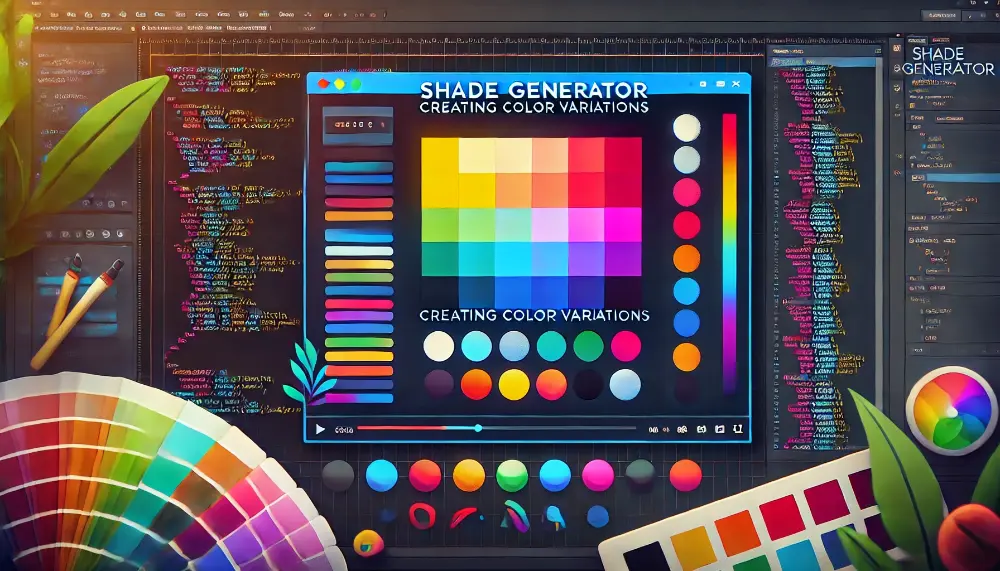Tint & Shade Generator Tool
Shade Generator: Creating Color Variations for Web Development

Introduction
In the realm of web design, color plays a pivotal role in creating aesthetically pleasing and effective user interfaces. One of the essential tools for web developers and designers is a shade generator. This tool helps you create different shades of a specific color, allowing you to enhance your designs with depth and dimension. In this post, we will explore what a shade generator is, why it’s useful, and how you can create and use shades of a color effectively.
What is a Shade Generator?
A shade generator is a tool that allows you to generate various shades of a specific color by adjusting its brightness and saturation. This is particularly useful when you want to create a cohesive color scheme for your web projects, ensuring that your design maintains a consistent look and feel. By using a shade generator, you can produce lighter or darker variations of your base color, which can be used for backgrounds, text, buttons, and other UI elements.
Why Use a Shade Generator?
Using a shade generator offers several advantages:
- Consistency: Maintaining consistent shades across your design helps create a harmonious look and feel, improving the user experience.
- Visual Hierarchy: Different shades can be used to establish a visual hierarchy, drawing attention to specific elements like call-to-action buttons or highlighted text.
- Flexibility: By generating various shades, you can easily adapt your color palette to suit different design contexts, whether for dark mode, light mode, or seasonal themes.
How to Use a Shade Generator
Using a shade generator is typically straightforward. Here’s how you can make the most of it:
- Select Your Base Color: Start by choosing the base color you want to work with. This can be done through color pickers or entering hex, RGB, or HSL values.
- Adjust the Shade Settings: Most shade generators allow you to adjust brightness and saturation levels. You can create lighter shades by increasing brightness or darker shades by decreasing it.
- Preview and Copy: Once you have generated the desired shades, you can preview them in real-time and copy the color values for use in your CSS.
Example of Using Shades in CSS
Here’s a practical example of how to use generated shades in your CSS:
body {
background-color: #f0f0f0; /* Light gray background */
}
.header {
background-color: #3498db; /* Base color */
color: #ffffff; /* White text */
}
.button {
background-color: #2980b9; /* Darker shade of base color */
color: #ffffff; /* White text */
}
.footer {
background-color: #1abc9c; /* Complementary shade */
color: #ffffff; /* White text */
}
In this example, we use a base color for the header and generate a darker shade for the button, creating a clear contrast that enhances usability.
Final Thoughts
A shade generator is an invaluable tool for web developers looking to create visually appealing and cohesive designs. By understanding how to generate and use shades effectively, you can elevate your web projects and provide a better user experience.
